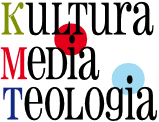
Uniwersytet Kardynała Stefana Wyszyńskiego
w Warszawie
ul. Dewajtis 5
01-815 Warszawa
kmt.uksw.edu.pl
kmt.uksw@gmail.com
ISSN 2081-8971
DOI 10.21697/kmt
Strona archiwalna
Na tej stronie znajdują się numery archiwalne kwartalnika od 1 (2010) do 53 (2023). Począwszy od numeru 54 kwartalnik znajduje się pod tym adresem.
Keywords: Digital radio internet radio analogue radio
Programming in traditional radio Vs. digital radio. COPE case study
Cite: , La programación en la radio tradicional Vs. la radio digital. Estudio de caso de la COPE, "Kultura - Media - Teologia", 2018( 33) nr 2, s. 8-38.
DOI: 10.21697/kmt.33.1
The radio media, like other media, has gone through a stage of technological and digital changes and revolutions. The radio is a medium that has been able to adapt to the new uses and consumption of an audience that no longer listens to the radio as before. Now it is the radio listeners who decide how, where and when to inform themselves and programming is a fundamental element when issuing the content and how to do it. The present investigation is based on the analysis of sixteen radio programs of the broadcaster COPE, listened to during a specific period of time in order to establish the comparisons between the programming followed by the traditional radio broadcasts and those broadcast exclusively through the online channel. On the occasion of the arrival of the Internet and social networks to our society and to the radio, it is important to determine the importance of programming when it comes to attracting the audience, since it has gone from being passive to becoming an information producer and of contents. The receivers are now users of a service with which they have begun to interact and this is why the content programming varies according to radio through waves or digital radio. The radio genres, the sections of each program or the content they share with their audience are some of the aspects that define the characteristic image and specific programming of a radio station.
About authors
Leticia González Díaz
ORCID: (nieznany)
Issues
- KMT53: Literature - Media - Language
- KMT52: In the Field of Journalism
- KMT51: Liturgy in the virtual world
- KMT50: In the field of theology, communication and media culture
- KMT49: Communication and Media
- KMT48: Contemporary paradigms of social communication
- KMT47: We celebrate our 10th anniversary
- KMT46: In the field of politics, communication and media
- KMT45: Wisdom and communication in the present day
- KMT44: Search for good, truth and beauty
- KMT43: Indentity contexts
- KMT42: Cultural Identity
- KMT41: Madia in a pandemic
- KMT40: Communication and education
- KMT39: Communication in media, culture and theology
- KMT38: Forms of Communication
- KMT37: Image in media
- KMT36: Values on the Net
- KMT35: Happiness - concepts and visualizations
- KMT34: Happiness - concepts and symbols
- KMT33: Culture and media: transformations
- KMT32: Images and simulacra
- KMT31: Escaping Sacrum
- KMT30: Public relations in non-profit institutions
- KMT29: The hate and trolling on the Internet
- KMT28: The Media, Rituals and Lifestyle
- KMT27: Interdisciplinary discourses
- KMT26: The Absolute (not)present
- KMT25: Hating and trolling on the Internet
- KMT24: Socio-cultural communication: between dialogue and social engineering
- KMT23: Monastic Spirituality
- KMT22: The Faces of the Cinema
- KMT21: Media, Relationships, Communication
- KMT20: Theology of Mass Media
- KMT19: Edith Stein – Saint and Feminist?
- KMT18: Advertising, marketing and law
- KMT17: The Truth of time, the Truth of the Screen
- KMT16: Culture and communication
- KMT15: The media and education
- KMT14: Interdisciplinary discourses
- KMT13: Manipulation in the media
- KMT12: Communications at the Council
- KMT11: Media and the sacrum
- KMT10: Religion and media
- KMT9: Media artifacts
- KMT8: Cultural spaces
- KMT7: Identity and its foundations
- KMT6: Media, culture, money and...
- KMT5: Truth in the media?
- KMT4: Supermarket of the culture
- KMT3: Media masquerade
- KMT2: Rev. prof. Antoni Lewek (1940-2010) - life and work
- KMT1: Thresholds for (post)modernity
Links
- Uniwersytet Kardynała Stefana Wyszyńskiego w Warszawie
- Wydział Teologiczny UKSW
- Instytut Wiedzy o Kulturze
- Instytut Edukacji Medialnej i Dziennikarstwa
Other info
We use cookies for traffic measurment. Privacy agreement (in polish).